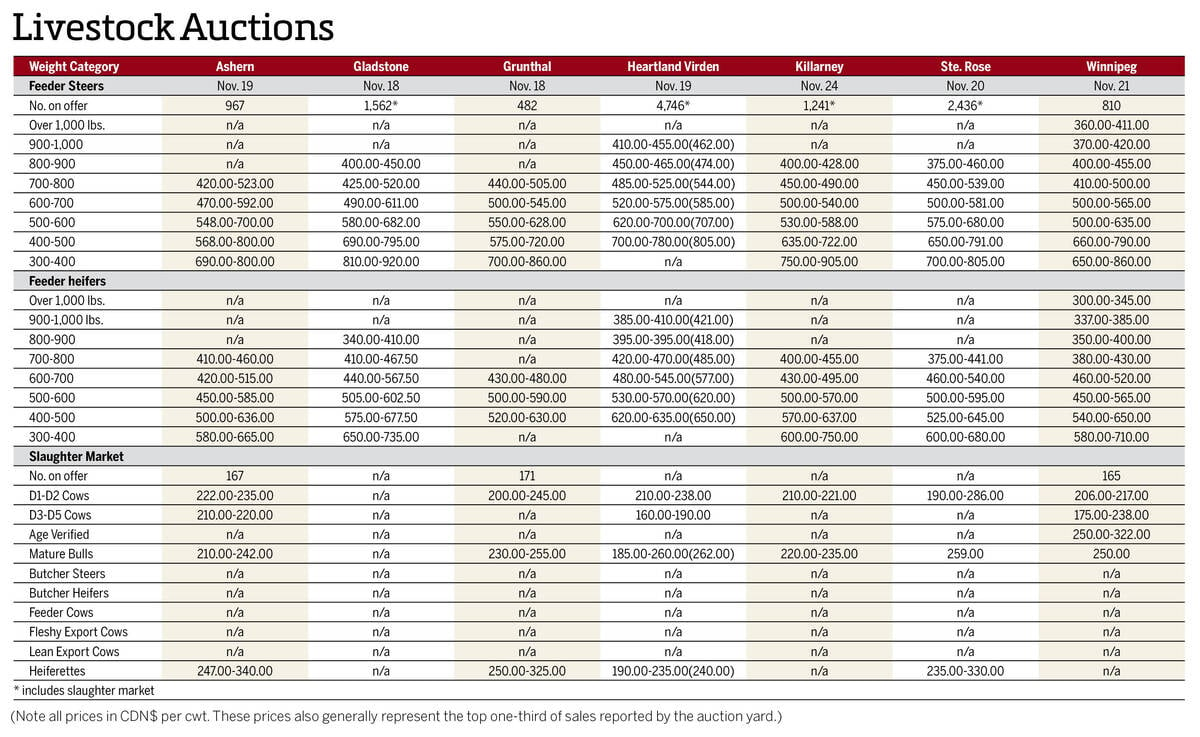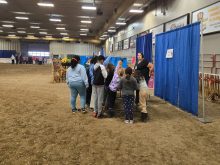In over three decades as a veterinarian, Roy Lewis never saw a cow die from ingesting blue-green algae from an infected water source.
But he still says it’s an issue ranchers should watch for.
Why it matters: Manitoba has had a hot start to the summer with over two dozen days with daily highs above 25 C between May 1 and June 26.
Read Also

Manitoba cattle prices – Nov. 24
Cattle prices from Manitoba’s major auction marts for the week of Nov. 18-24.
In Manitoba, for the average resident, blue-green algae is often mentioned in the same breath as Lake Winnipeg. The algae made headlines in 2019, after worse-than-normal blooms washed up against the shores of the lake.
For the livestock producer, it probably brings back flashbacks to the 2021 drought, when blue-green algae was among the hazards flagged by experts as Manitoba’s livestock sector watched dugouts dry up.
The drought conditions and heat were ideal for the algae to grow, producers were warned at the time.
Blue-green algae can be instantly deadly to an animal that ingests a sufficient amount.
“Many types of algae are a blue-green color, but the problem happens when the algae start to die off, release a bacterial toxin and float,” a Manitoba Agriculture handout on dugout management reads. “The wind will blow it over to the edges of the dugout. It concentrates in one area and then, if livestock are watering directly from the dugout, they may ingest a lot at one watering. This is when you see death from blue-green algae.”
However, it’s tricky to identify as the culprit, making it difficult to diagnose as an official cause of mortality.
“The toxin dissipates fast, so testing water is often not fruitful and you find nothing following post-mortems of cattle. It is usually diagnosed by ruling out other causes,” said Lewis, a retired large-animal veterinarian.
“However, affected cattle are usually found very close to the water source with little sign of struggle, much like water hemlock weed poisoning,” he said.

In a year that’s seen plenty of days within the algae’s comfort zone, it’s important to check for it in dugouts and other surface water bodies from which livestock drink, agricultural water engineer Shawn Elgert wrote in an article for the government of Alberta.
“Blue-green algae can look like blue-green scum, pea soup or grass clippings suspended in the water. You should start watching for it when the temperatures rise above 25 C,” he said.
If the algae’s presence is suspected, contact a water specialist to determine whether it is toxic, wrote Elgert.
“You should also remove your livestock from the water source in the interim and prevent them from accessing it. One rule of thumb is that if you can grab it as a solid mass in your hand, it is not blue-green algae.”
Prevention
The good news is that it can be prevented and managed.
Manitoba Agriculture warns producers to watch their dugout nutrient levels, since high levels provide a friendly environment for algae to grow.
Aerating the dugout can also reduce the chances of algae development, according to Elgert.
“Aeration of the dugout can also help improve the water quality,” he said. “A dye packet can also be thrown into the dugout to help prevent photosynthesis from occurring, thereby reducing the growth of blue-green algae. However, one action alone may not be enough to prevent growth.”
Scouting should also go below the dugout’s surface, he noted.
“Since blue-green algae can rise or fall in the water column, inspection of the dugout should include peering into the deeper part of the water,” the Alberta expert wrote.
“Always be safe around the dugout by going along with another person and have a rope with a flotation device attached.”
Treating with bluestone should approached with caution, Manitoba Agriculture also warned.
The copper sulfate treatment “will prevent the growth of algae,” the handout read, “but once the algae is present, treatment will make the algae die off and release toxins.”
“Once you treat it, consumption should be restricted for up to a month,” Elgert also said, noting that this will give that influx of toxins time to degrade.
“You can follow up with aluminum sulphate and/or hydrated lime treatments afterwards to remove the nutrients from the water to prevent regrowth. Sometimes these coagulant treatments are better than a sole copper treatment.”
Going remote
Perhaps one of the best prevention methods, according to the experts, is keeping the cattle out of the dugout entirely.
Lewis said remote watering alone has reduced the potential of livestock deaths from algae ingestion.
“It was more prevalent years ago with guys watering out of dugouts and sloughs,” he said.
“Now most of them have remote watering set up, so they’ll pump the water that’s deep down in the dugout out to a trough. It’s been shown that if you got good fresh water close by, cattle will drink out of it rather than going to this dugout. So the risk gets less and less.”
Manitoba Agriculture urges producers to place intakes in the centre of the water source, away from possible algae blooms.
Also, the department advises, include a barrier area around the water to avoid inadvertent manure runoff.
Other preventive measures are more difficult unless a new dugout is planned.
If the producer is planning to dig, Elgert advises making the dugout deep.
“Temperature is an important factor in the growth of blue-green algae, so a deeper dugout with steeper slopes, while avoiding slope deterioration, would help make the dugout water cooler,” he said.
He also advised against building dugouts in waterways. Sediments can bring more nutrients into the dugout and depth can be lost quickly.
– With files from the Government of Alberta and Roy Lewis, DVM
















